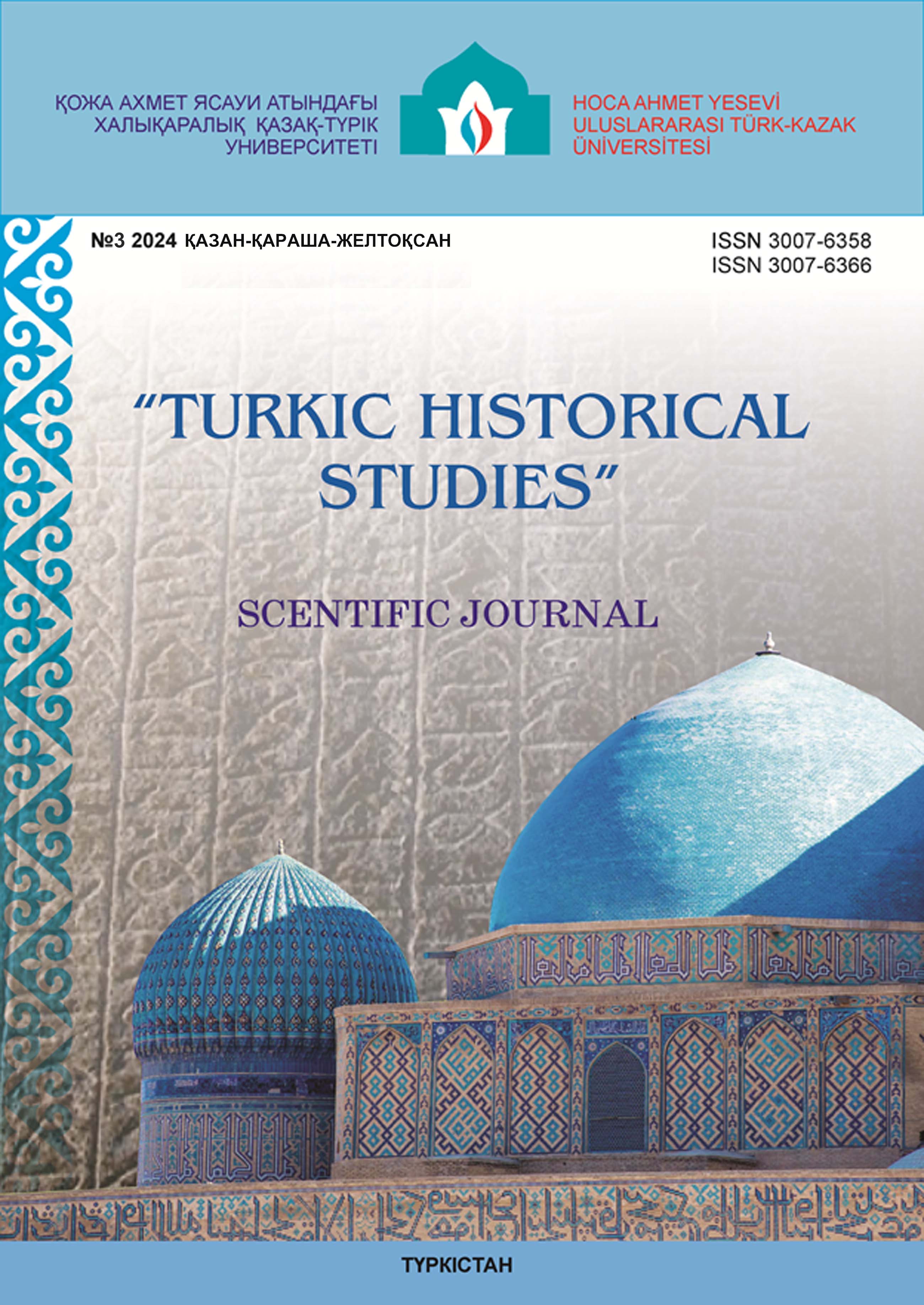ARCHAEOLOGICAL STUDIES OF THE BURIAL MOUND CEMETERY OF KANYARBULAK
171 66
Keywords:
Southern Kazakhstan, the early Iron Age, the Middle Ages, burial mounds, catacombs, earthen pits, ceramic complex.Abstract
The burial sites of the Kaynarbulak burial mound are located on the northwestern outskirts of the city of Shymkent, within the territory of the under-construction industrial zone "Bozaryk," and at the time work began, they were at risk of complete destruction due to the intensive development of this area.
During the protective and rescue operations, 16 burial mounds with earthen embankments were studied. Burials were conducted both in ground graves and in catacombs with dromoses. Almost all the burials were disturbed in ancient times. Most of the skeletons are scattered across the burial structures, some are partially lost.
Finds from the graves include broken and intact forms of kitchen and table ceramics (jugs, pots, mugs, and tableware of open forms), fragments of heavily corroded iron and bronze artifacts (knives, arrowheads, ornaments), as well as beads. The orientation of the buried in the catacombs is mainly to the east, while in ground graves it is to the west.
Chronologically studied burial sites contain materials from the early Iron Age and the Middle Ages. The entire set of finds from the early Iron Age is conventionally divided into three chronological groups: V to II centuries BC, II century BC – I century AD, and I to IV centuries AD. The burials from the medieval period were conducted according to the Muslim rite.

